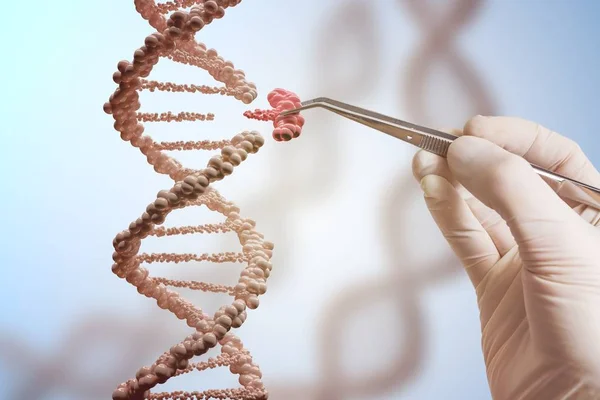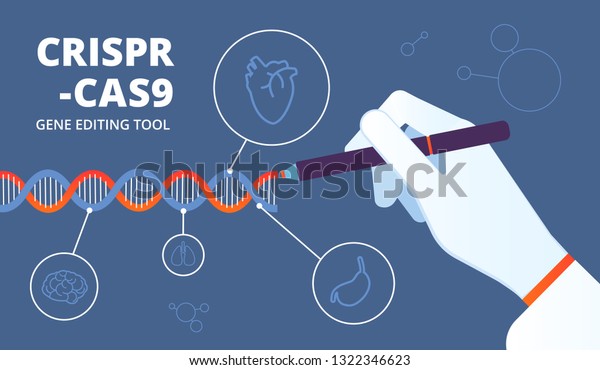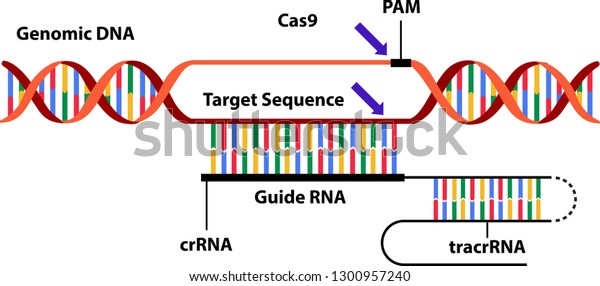What is Genome Editing?
•Genome modifying, or genome engineering, or gene modifying, may be a quite hereditary designing where DNA is embedded, erased, changed or supplanted within the genome of a living organic structure.
•Unlike early hereditary building methods that arbitrarily embeds hereditary material into a bunch genome, genome altering focuses on the additions to site specific locations.
Genome editiors
As of 2015 four groups of built nucleases were utilized: meganucleases, zinc finger nucleases (ZFNs), interpretation activator-like effector-based nucleases (TALEN), and therefore the bunched routinely interspaced short palindromic rehashes (CRISPR/Cas9) framework.
•Nine genome editors were accessible starting at 2017.
•All three significant classes of those compounds—zinc finger nucleases (ZFNs), interpretation activator-like effector nucleases (TALENs) and designed meganucleases—were chosen naturally Methods because the 2011 Method of the Year.
•The CRISPR-Cas9 framework was chosen by Science as 2015 Breakthrough of the Year.
• The nucleases create specific double-strand breaks (DSBs) at desired locations within the genome and harness the cell’s endogenous mechanisms to repair the induced break by natural processes of homologous recombination (HR) and non-homologous end- joining (NHEJ).

Utilizations:
Gene knock out
Gene tagging
Unique mutation (insertion/deletion study)
Gene knock in
Promoter have a glance at
Strategies for plant genome control
Classical breeding
Transgenic technique
Targeted genome enhancing
Meganucleases
•Meganucleases, found within the late 1980s, are catalysts within the endonuclease family which are portrayed by their ability to perceive and cut huge DNA successions (from 14 to 40 base sets).
•The maximum widespread and excellent acknowledged meganucleases are the proteins within the LAGLIDADG own family, which owe their call to a conserved amino acid collection.
•Meganucleases have the advantage of inflicting less toxicity in cells than methods inclusive of Zinc finger nuclease (ZFN), in all likelihood because of extra stringent DNA series recognition.
•One fundamental disadvantage is the construction of sequence-specific enzymes for all possible sequences is steeply-priced and time consuming, as one is not benefiting from combinatorial possibilities that methods including ZFNs and TALEN- based totally fusions utilize.

Crop in which it is used
Maize : Herbicide obstruction ( Gao et al, 2010 )
Cotton : Herbicide obstruction and and bug opposition ( D'Halluin et al., 2013 )
Impediment
Hard to regulate the DNA restricting site
Little recognition site
What is ZFN innovation?
Zinc fingers were first found within the African pawed amphibian (Xenopus laevis) in 1985.
A class of designed DNA-restricting proteins.
Encourage targated altering of the genome by making double strand breaks inside the DNA at specific places.
Double strand breaks are important for site-explicit mutagenesis.
Invigorate the cell’s natural DNA repair methods i.e, HR and NHEJ
Generate exactly targeted genomic editing leading to cell strains with targated gene deletions, integrations, or modifications.

What are zinc finger nuclease
Extraordinarily particular genomic scissor
Consists of two practical domains
• A DNA – binding domain
• A DNA- cleaving domain accommodates of nuclease area of FoK I ( FokI could be a obviously going down type IIS restrict enzyme and is found in Flavobacterium okeanokoites.
Crop in which it turned into used
Maize : Herbicide resistance ( Shukla et al., 2009 )
Soybean : Physiological quality ( Curtin et al., 2011 )
Tomato : Towards TYLCV ( Takenaka et al., 2007 )
Impediment
Off objective impact
Development is lumbering and tedious
Uses of ZFN
•Repairing mutations
•Insertion of gene or DNA piece at explicit site
•Repair or supplant distorted genes
•Disabiling an allele
•Allele altering
•Applications in clinical segment
• a) Gene treatment
• b)Treatment of HIV
TALENs ( Transcription activator-like effector nucleases )
Transcription activator-like effector nucleases TALENs are the restriction nuclease engineered to scale back precise sequences of DNA . They're made by means of fusing: DNA-binding domain (TAL effector) DNA-cleavage area ( the catalytic domain of RE FoK I).
TALENs may be designed to tie any ideal DNA succession to chop at explicit areas in DNA. First time revealed by Ulla Bonas in Xanthomonas oryzae (1989).
TALEN constructs are utilized in a very comparable manner to designed zinc finger nucleases and have three blessings in focused mutagenesis
1. DNA binding specificity is higher.
2. Off-target impacts are lower, and
3. 3. Development of DNA-binding domain names is less complicated.
Primarily based on the most theoretical distance between DNA binding and nuclease hobby, TALEN methods lead to the best precision.
CRISPRs (Clustered Regularly Interspaced Short Palindromic Repeats)

CRISPRs (Clustered Regularly Interspaced Short Palindromic Repeats) are hereditary components that microorganisms use as a kind of gained insusceptibility to secure against infections. They comprise of short arrangements that begin from viral genomes and are fused into the bacterial genome.
Cas (CRISPR associated proteins) manner these sequences and reduce matching viral DNA sequences.
With the help of introducing plasmids containing Cas genes and explicitly developed CRISPRs into eukaryotic cells, the eukaryotic genome are often reduce at any desired position. some organizations, including Cellectis and Editas are attempting to adapt the CRISPR technique while creating gene explicit treatments.
Parts of CRISPR
Proto spacer adjacent motif (PAM) could be a DNA arrangement promptly following the DNA succession focused by the Cas9 nuclease within the CRISPR bacterial versatile resistant framework.
PAM may be a component of the invading virus or plasmid, however isn't a thing of the bacterial CRISPR locus. Cas9 won't efficiently bind to or cleave the target DNA sequence if it's not followed by way of the PAM sequence.
CRISPR RNA (crRNA) may be a trans-encoded small RNA with 24 nucleotide complementarity to the repeat regions of crRNA precursor transcripts.
Trans activating crRNA (tracr RNA ) is formed of of a more drawn out stretch of bases that are consistent and provides the "stem circle" structure limited by the CRISPR nuclease.
At the point when these RNA parts hybridize they structure a guide RNA which "programmably" targets CRISPR nucleases to DNA arrangements relying upon the complementarity of the crRNA and therefore the presence of various DNA capabilities (PAM collection identified by the nuclease).

Examples of plants changed with CRISPR innovation
Corn : Targeted mutagenesis ( Liang et al. 2014 )
Rice : Targeted mutagenesis ( Belhaj et al. 2013 )
Sorghum : Targeted gene alteration ( Jiang et al. 2013b )
Sweet orange : Targeted genome altering ( Jia and Wang 2014 )
Tobacco : Targeted mutagenesis ( Belhaj et al. 2013 )
Utility in Agriculture
1. Can be utilized to make serious extent of hereditary inconstancy at exact locus in the genome of the crop plants.
2. Capacity device for multiplexed converse and forward hereditary study.
3. Exact transgene joining at explicit loci.
4. Developing biotic and abiotic safe attributes in crop plants.
5. Potential tool for growing virus resistant crop types.
6. Can be utilized to eliminate undesirable species like herbicide resistant weeds, insect pest.
7. Ability device for improving polyploid crops like potato and wheat.
References
Jasin M (June 1996). "Genetic manipulation of genomes with rare-cutting endonucleases". Trends in Genetics. 12 (6): 224–8. doi:10.1016/0168-9525(96)10019-6.
Science News Staff (17 December 2015). "Breakthrough of the Year: CRISPR makes the cut.
Tan WS, Carlson DF, Walton MW, Fahrenkrug SC, Hackett PB (2012). Precision editing of large animal genomes. Advances in Genetics. 80. pp. 37–97. doi:10.1016/B978-0-12-404742-6.00002-8.
Cheong, Kang Hao; Koh, Jin Ming; Jones, Michael C. (2019). "Black Swans of CRISPR: Stochasticity and Complexity of Genetic Regulation". BioEssays. 0 (7): 1900032. doi:10.1002/bies.201900032.



No comments:
Post a Comment
Welcome to agricultural biotechnology Comment Section
We are thrilled to have you join our community of passionate individuals interested in agriculture science, molecular work, and biotechnology techniques . Your thoughts, questions, and insights are valuable to us, and we encourage open and constructive discussions.
Here are a few guidelines to ensure that our comment section remains informative and respectful:
Stay On Topic: Please keep your comments related to the blog post's content. If you have off-topic questions or suggestions, feel free to contact us directly.
Respect Others: Treat fellow commenters with respect and kindness. We embrace diverse perspectives, but hate speech, harassment, or offensive language will not be tolerated.
No Spam: Avoid posting promotional or irrelevant links. Comments that are clearly spammy will be removed.
Share Knowledge: If you have insights, experiences, or additional information related to the topic, please share it. Your contributions can enhance everyone's understanding.
Ask Questions: Don't hesitate to ask questions or seek clarification. We're here to foster learning and knowledge exchange.
Cite Sources: If you're referencing specific studies or research, please provide citations or links when possible.
By following these guidelines, we can maintain a vibrant and informative comment section that benefits all readers. Let's grow together in our understanding of agriculture science, molecular work, and biotechnology.
Thank you for being a part of our community, and we look forward to your contributions!
Best regards,
Our Scientific team.